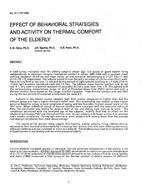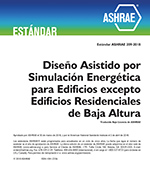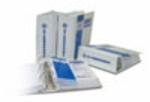Description
A field survey indicated that 101 elderly subjects (mean age 73.4 years) of good health living independently in Hamilton, Ontario, maintained comfort in winter 1985-1986 with a constant mean clothing insulation of 0.8 clo and mean indoor air and operative temperatures at 21.2°C (70.2 F) and 21.5°C (70.7 F), respectively. The subjects scored 83.5 on the Self-Evaluation of Life Function (SELF) scale. Mean activity level at rest was 1.5 met and during periods of light exercise (walking at 1.3 mph, 2 km hr -1) and light domestic household work was 1.9 met. The subjects’ mean thermal comfort vote at rest was -0.1, very close to a thermal sensation of neutrality (0.0 on a scale from -3 to + 3). This agreed with the corresponding measurement (mean of -0.2) of Predicted Mean Vote (PMV) performed with thermal comfort meter based on the Fanger Comfort Equation. Their thermal comfort vote and PMV during the two periods of increased activity were the same, 0.3.
Subjects in the lowest income category kept their indoor temperature higher than did the affluent group and had a higher thermal comfort vote. This relationship was related to their higher personal disability rating, greater symptoms of aging, and less favorable (higher) overall score on the SELF scale. When individual ratings of thermal comfort were compared with the measured values of PMV, the correlation was strong for subjects both at rest and during light exercise or work. The correlation weakened with the increased age of the subjects. Activity level had an effect on the relationship between PMV and thermal comfort vote. At rest, subjects with lower activity than average had a weaker correlation. During light exercise or work, subjects with activity lower than the average had stronger correlation than those above average.
The results of the present study suggest that healthy, elderly subjects, living independently, adjusted to their thermal environments by increasing their activity level and their clothing insulation, although clothing was not increased as much as expected. This tendency may lead to an increased risk of hypothermia in less healthy and less active groups of elderly.
Units: Dual
Citation: ASHRAE Transactions, 1988, vol. 94, pt. 1, Dallas, TX
Product Details
- Published:
- 1988
- Number of Pages:
- 21
- File Size:
- 1 file , 1.5 MB
- Product Code(s):
- D-DA-88-3117




